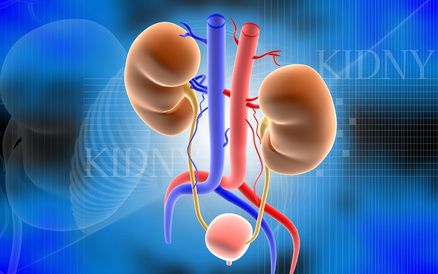Today the U.S. Food and Drug Administration approved Narcan nasal spray, the first FDA-approved nasal spray version of naloxone hydrochloride, a life-saving medication that can stop or reverse the effects of an opioid overdose. Opioids are a class of drugs that include prescription medications such as oxycodone, hydrocodone, and morphine, as well as the illegal drug heroin.
Drug overdose deaths, driven largely by prescription drug overdoses, are now the leading cause of injury death in the United States – surpassing motor vehicle crashes. In 2013, the Centers for Disease Control and Prevention reported the number of drug overdose deaths had steadily increased for more than a decade. When someone overdoses on an opioid, it can be difficult to awaken the person, and breathing may become shallow or stop – leading to death if there is no medical intervention. If naloxone is administered quickly, it can counter the overdose effects, usually within two minutes.
“Combating the opioid abuse epidemic is a top priority for the FDA,” said Stephen Ostroff, M.D., acting commissioner, Food and Drug Administration. “We cannot stand by while Americans are dying. While naloxone will not solve the underlying problems of the opioid epidemic, we are speeding to review new formulations that will ultimately save lives that might otherwise be lost to drug addiction and overdose.”
Until this approval, naloxone was only approved in injectable forms(most commonly delivered by syringe or auto-injector. Many first responders and primary caregivers, however, feel a nasal spray formulation of naloxone is easier to deliver, and eliminates the risk of a contaminated needle stick. As a result, there has been widespread use of unapproved naloxone kits that combine an injectable formulation of naloxone with an atomizer that can deliver naloxone nasally. Now, people have access to an FDA-approved product for which the drug and its delivery device have met the FDA’s high standards for safety, efficacy and quality.
Narcan nasal spray does not require assembly and delivers a consistent, measured dose when used as directed. This prescription product can be used on adults or children and is easily administered by anyone, even those without medical training. The drug is sprayed into one nostril while the patient is lying on his or her back, and can be repeated if necessary. However, it is important to note that it is not a substitute for immediate medical care, and the person administering Narcan nasal spray should seek further immediate medical attention on the patient’s behalf.
The FDA granted fast-track designation and priority review for Narcan nasal spray. Fast track is a process designed to facilitate development and expedite review of drugs intended to treat serious conditions and that demonstrate the potential to address an unmet medical need. The agency’s priority review program provides for an expedited review of drugs that offer a significant improvement in the safety or effectiveness of the treatment, prevention, or diagnosis of a serious condition. Narcan nasal spray is being approved in less than four months, significantly ahead of the product’s prescription drug user fee goal date of January 20, 2016.
In clinical trials conducted to support the approval of Narcan nasal spray, administering the drug in one nostril delivered approximately the same levels or higher of naloxone as a single dose of an FDA-approved naloxone intramuscular injection, and achieved these levels in approximately the same time frame.
“We heard the public call for this new route of administration, and we are happy to have been able to move so quickly on a product we are confident will deliver consistently adequate levels of the medication – a critical attribute for this emergency life-saving drug,” said Janet Woodcock, M.D., director of the FDA’s Center for Drug Evaluation and Research.
The National Institute on Drug Abuse played a critical role in the development of Narcan nasal spray as well, forming a public-private partnership by designing and conducting the clinical trials required to determine that the intranasal formulation delivered naloxone as quickly and as effectively as an injection. NIDA then worked with its private sector partners to obtain FDA approval.
“This easy-to-use intranasal formulation will no doubt save many lives,” said Nora Volkow, M.D., director, National Institute on Drug Abuse at the National Institutes of Health. “While prevention is the ultimate goal, the drug’s successful development illustrates how public/private scientific partnerships can play an important role in responding to a national crisis right now.”
Increasing access to and the use of naloxone is part of the targeted strategy that Health and Human Services Secretary Sylvia M. Burwell put forward in March to address the opioid epidemic and save lives. In July, addiction and advocacy groups called for expanded availability of naloxone during an FDA-sponsored public workshop exploring the uptake and use of the drug.
The use of Narcan nasal spray in patients who are opioid dependent may result in severe opioid withdrawal characterized by body aches, diarrhea, increased heart rate (tachycardia), fever, runny nose, sneezing, goose bumps (piloerection), sweating, yawning, nausea or vomiting, nervousness, restlessness or irritability, shivering or trembling, abdominal cramps, weakness, and increased blood pressure.












